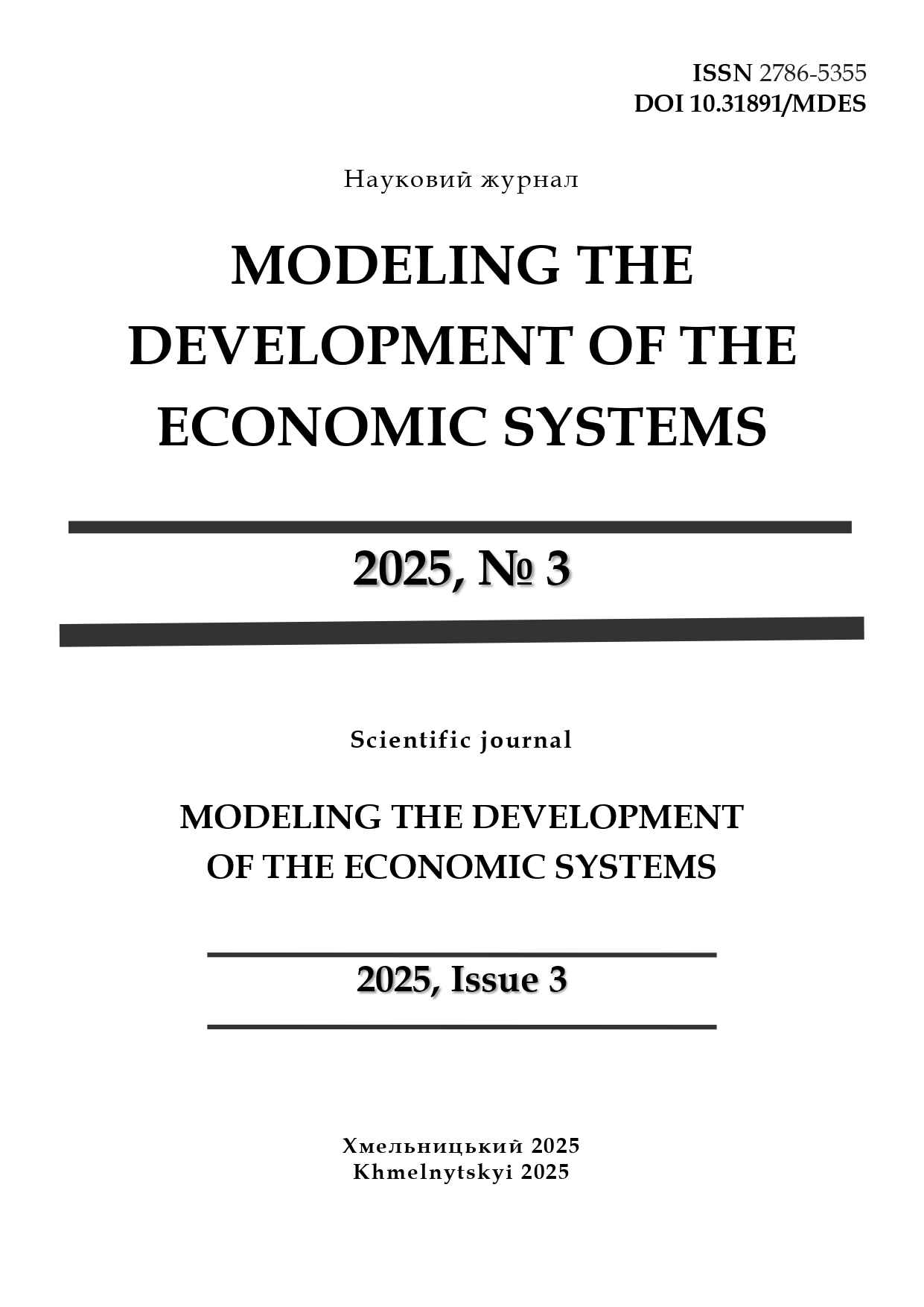LAND MANAGEMENT PLANNING AS THE BASIS FOR ENVIRONMENTALLY SAFE LAND USE
DOI:
https://doi.org/10.31891/mdes/2025-17-32Keywords:
land management planning, sustainable development, environmental safety, rational land use, landscape-ecological approach, GIS technologies, environmental-economic assessment, land protection, digital planning, greening of land useAbstract
The article substantiates land management planning as a fundamental instrument for environmentally safe and rational land use within the paradigm of sustainable development. The current state of land use in Ukraine is characterized by soil degradation, an imbalanced structure of land categories, fragmented holdings, and insufficient integration of environmental criteria into design decisions. This study aims to establish the scientific and methodological foundations for modernizing the land management planning system, with an emphasis on the landscape-ecological approach, digitalization of processes (GIS/RS), environmental-economic assessment, and public participation. The methodological framework combines systems and spatial analysis, multicriteria land suitability evaluation, agro-ecological zoning, and tools of geoinformation modeling and monitoring.
A model of an “ecologized” land management project is proposed. It provides for the mandatory inclusion of environmental constraints and ecosystem services in the decision-making structure; the use of landscape-ecological zoning as the basis for functional planning; and digital scenario modeling of land use to mitigate erosion, flooding, and degradation risks. Institutional steps are justified, including harmonization of the national legal framework with EU approaches, the creation of an integrated national GIS platform on land data, and the standardization of environmental-economic appraisal procedures across all types of land-management projects. The expediency of expanding public-participation tools (open geoportals, public consultations) is demonstrated as a way to increase transparency and improve spatial coordination at the community level.
The practical significance lies in forming a project workflow for local governments and land-management organizations: from inventory and agro-ecological monitoring to the implementation of conservation measures (conservation of degraded plots, optimization of crop rotations, restoration of riparian buffer strips, and shelterbelts). The proposed approach reduces environmental risks, raises productivity and resilience of agrolandscapes, and reconciles the interests of the state, land users, and local communities. The article concludes that land management planning must be transformed from a predominantly technical procedure into a comprehensive territorial-governance instrument that integrates environmental safety, economic efficiency, and social responsibility.
The article substantiates land management planning as a fundamental instrument for environmentally safe and rational land use within the paradigm of sustainable development. The current state of land use in Ukraine is characterized by soil degradation, an imbalanced structure of land categories, fragmented holdings, and insufficient integration of environmental criteria into design decisions. This study aims to establish the scientific and methodological foundations for modernizing the land management planning system, with an emphasis on the landscape-ecological approach, digitalization of processes (GIS/RS), environmental-economic assessment, and public participation. The methodological framework combines systems and spatial analysis, multicriteria land suitability evaluation, agro-ecological zoning, and tools of geoinformation modeling and monitoring.
A model of an “ecologized” land management project is proposed. It provides for the mandatory inclusion of environmental constraints and ecosystem services in the decision-making structure; the use of landscape-ecological zoning as the basis for functional planning; and digital scenario modeling of land use to mitigate erosion, flooding, and degradation risks. Institutional steps are justified, including harmonization of the national legal framework with EU approaches, the creation of an integrated national GIS platform on land data, and the standardization of environmental-economic appraisal procedures across all types of land-management projects. The expediency of expanding public-participation tools (open geoportals, public consultations) is demonstrated as a way to increase transparency and improve spatial coordination at the community level.
The practical significance lies in forming a project workflow for local governments and land-management organizations: from inventory and agro-ecological monitoring to the implementation of conservation measures (conservation of degraded plots, optimization of crop rotations, restoration of riparian buffer strips, and shelterbelts). The proposed approach reduces environmental risks, raises productivity and resilience of agrolandscapes, and reconciles the interests of the state, land users, and local communities. The article concludes that land management planning must be transformed from a predominantly technical procedure into a comprehensive territorial-governance instrument that integrates environmental safety, economic efficiency, and social responsibility.
Downloads
Published
How to Cite
Issue
Section
License
Copyright (c) 2025 Людмила МАКЄЄВА, Олександр КНЯЗЬ, Альона РЯСНЯНСЬКА

This work is licensed under a Creative Commons Attribution 4.0 International License.




